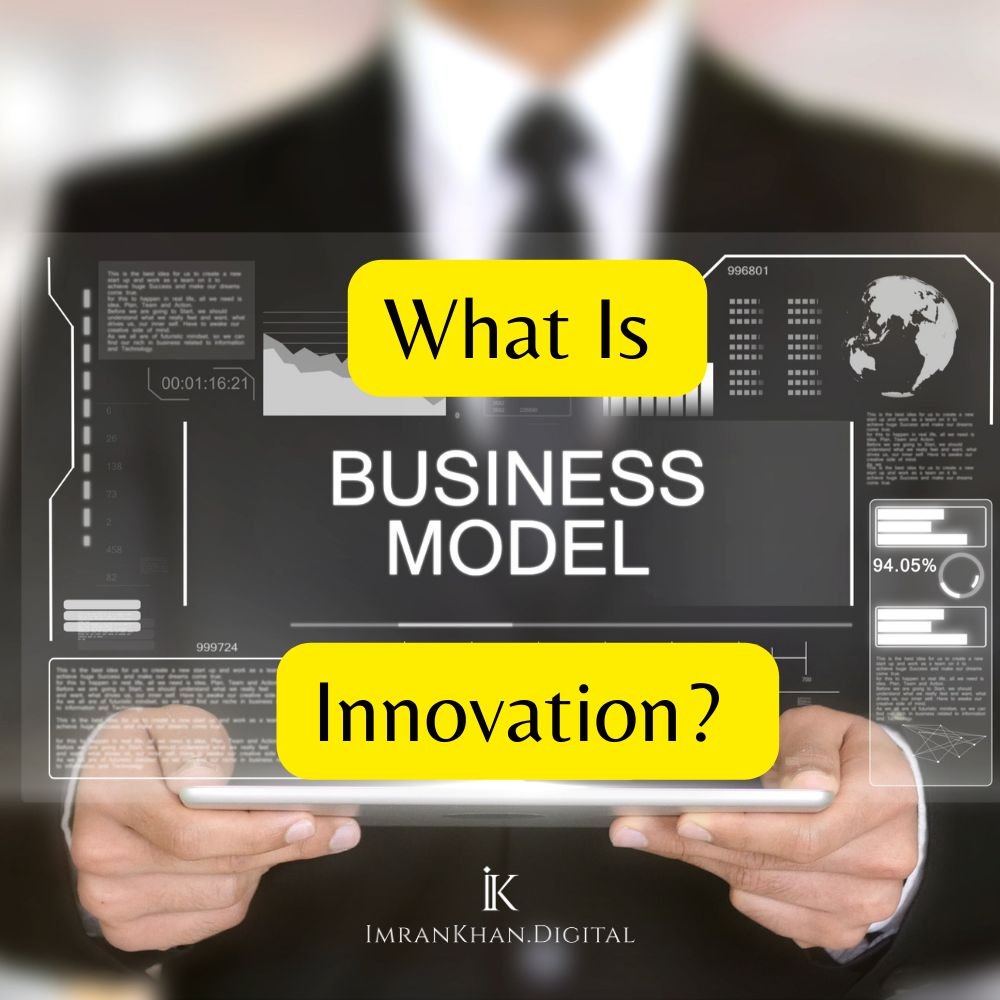
The process of innovating a business model revolves around coming up with creative ideas to provide customers with value and bring in profit for the business. This could include designing new products, services, or methods of distribution, or utilizing unconventional approaches such as different pricing structures or developing partnerships.
With careful consideration of customers’ needs and the company’s overall objectives, businesses can evolve and stay competitive by effectively changing their business models.
Types of business model innovation
Here are some types of business model innovation:
- Product-to-Service Transformation: In this type of innovation, a company transforms its product-based business model to a service-based one. For example, instead of selling software as a product, a company can offer it as a subscription-based service.
- Platform Business Model: This model involves creating a platform that connects buyers and sellers. Examples of companies that use this model include Airbnb, Uber, and Amazon.
- Freemium Model: This model involves offering a basic product or service for free, and then charging for premium features or upgrades. Examples of companies that use this model include Dropbox, LinkedIn, and Spotify.
- Razor and Blade Model: In this model, a company sells a product at a low price (razor), and then makes money on the consumables or services that are required to use the product (blade). Examples of companies that use this model include Gillette and Nespresso.
- Long Tail Model: This model involves offering a large number of niche products or services to a small customer base. Examples of companies that use this model include Netflix, Amazon, and iTunes.
- Reverse Auction Model: In this model, buyers post what they want to buy, and sellers bid to provide the product or service. Examples of companies that use this model include Priceline and Upwork.
- Multi-sided Model: This model involves creating a platform that serves multiple user groups with different needs. Examples of companies that use this model include Google and Facebook.
- Subscription Model: In this model, customers pay a regular fee to access a product or service on an ongoing basis. Examples of companies that use this model include Netflix, Spotify, and Amazon Prime.
- Direct-to-Consumer Model: This model involves selling products or services directly to consumers, bypassing traditional retail channels. Examples of companies that use this model include Warby Parker and Casper.
- Franchise Model: In this model, a company sells the right to use its brand and business model to a third-party franchisee. Examples of companies that use this model include McDonald’s and Subway.
Business Model innovation framework
A business model innovation framework is a set of guidelines or steps that businesses can use to create, evaluate, and implement new business models. It helps organizations to identify opportunities for innovation, develop new ideas, and test them to ensure they are feasible and sustainable.
Here are the common steps in a business model innovation framework:
- Analyze the current business model: Start by understanding the current business model, including the value proposition, revenue streams, cost structure, and key activities.
- Identify the drivers for change: Look at the external and internal factors that are driving the need for change, such as changes in customer behavior, technology disruption, and new competitors.
- Generate ideas: Brainstorm ideas for new business models that align with the company’s goals and address the identified drivers for change.
- Evaluate and select the best ideas: Evaluate each idea against criteria such as feasibility, potential impact, and alignment with the company’s strategy. Select the best ideas to move forward.
- Prototype and test: Develop prototypes and test the new business models with a subset of customers or stakeholders. Gather feedback and iterate until the model is refined and validated.
- Implement: Once the new business model has been validated, plan and execute its implementation, including the necessary changes to the organization’s structure, processes, and systems.
- Monitor and adjust: Continuously monitor and adjust the new business model based on feedback, market changes, and performance metrics.
By following a business model innovation framework, organizations can systematically identify and pursue new opportunities for growth and competitiveness.
Business Model innovation strategy
A business model innovation strategy refers to the deliberate plan or approach that a business adopts to create, improve, or change its business model to better serve customers, create new sources of revenue, or gain a competitive advantage. Here are some common business model innovation strategies:
- Customer focus: This strategy involves understanding the customer’s needs and preferences and developing a business model that meets those needs better than competitors.
- Value-based pricing: This strategy involves pricing products or services based on the value they provide to customers, rather than just the cost of production or competition.
- Disruptive innovation: This strategy involves creating a new business model that disrupts the existing market by offering a new way of delivering products or services that meets customer needs in a better way.
- Platform strategy: This strategy involves creating a platform that connects multiple stakeholders and generates value for all parties involved.
- Collaborative strategy: This strategy involves collaborating with other businesses to create a new business model that combines the strengths of multiple organizations.
- Digital transformation: This strategy involves using digital technologies to transform the business model, enabling new products or services or improving the efficiency of existing processes.
- Franchising or licensing: This strategy involves licensing or franchising the existing business model to other organizations or entrepreneurs to expand the business reach and revenue streams.
- Sustainability strategy: This strategy involves creating a business model that is environmentally or socially sustainable, creating a positive impact on the environment and society.
- Lean startup strategy: This strategy involves creating a new business model through a lean startup approach, which involves rapid prototyping, testing, and iteration to identify the most viable business model.
By adopting a business model innovation strategy, businesses can identify opportunities for innovation, develop new business models, and improve their competitive advantage.
Four approaches to business model innovation
Here are four approaches to business model innovation:
- Blue Ocean Strategy: This approach focuses on identifying untapped markets or customer segments where there is little competition and developing a business model that meets their unmet needs. By creating new demand rather than competing in an existing market, businesses can achieve rapid growth and higher profits.
- Value Proposition Design: This approach involves understanding the customer’s needs, pain points, and aspirations and designing a value proposition that meets those needs better than competitors. By creating a unique value proposition, businesses can differentiate themselves and create a competitive advantage.
- Business Model Canvas: This approach involves mapping out the key elements of the existing business model, such as customer segments, value proposition, revenue streams, and cost structure, and identifying areas for improvement or innovation. By systematically analyzing each element of the business model, businesses can identify new opportunities for growth and improvement.
- Platform Thinking: This approach involves creating a platform that connects multiple stakeholders and generates value for all parties involved. By leveraging the network effects of a platform, businesses can create new revenue streams, expand their reach, and enhance the customer experience. This approach is particularly useful for businesses operating in industries such as technology, finance, and media.
What are the main elements of business model innovation?
Here are the main elements of business model innovation:
- Value proposition: This refers to the unique value that a business offers to its customers, such as the benefits, solutions, or experiences that its products or services provide.
- Customer segments: This refers to the specific groups of customers that a business targets and serves. Customer segments can be defined by factors such as demographics, behavior, or needs.
- Revenue streams: This refers to the sources of revenue that a business generates, such as product sales, subscription fees, or advertising revenue.
- Cost structure: This refers to the costs incurred by a business to create and deliver its value proposition, such as production costs, marketing expenses, or employee salaries.
- Key activities: This refers to the critical tasks and processes that a business performs to deliver its value proposition, such as research and development, manufacturing, or customer service.
- Key resources: This refers to the critical assets and resources that a business requires to deliver its value proposition, such as technology, intellectual property, or human capital.
- Partnerships: This refers to the relationships that a business forms with other organizations to create or deliver its value proposition, such as suppliers, distributors, or strategic partners.
- Channels: This refers to the various channels that a business uses to reach and interact with its customers, such as online platforms, physical stores, or direct sales.
By analyzing each of these elements, businesses can identify opportunities for innovation, develop new ideas, and test them to ensure they are feasible and sustainable.
Process of business model innovation
Innovation in business models involves identifying opportunities for change and developing new approaches to how a company creates, delivers, and captures value. This process typically begins with an analysis of the current business model to identify areas of weakness or potential for improvement.
Next, brainstorming sessions may be held to generate ideas for new business models, with an emphasis on exploring novel approaches to solving problems and meeting customer needs. These ideas are evaluated based on their feasibility and potential impact on the company and its stakeholders.
Once a new business model has been identified, it must be refined and tested through experimentation and prototyping. This involves creating a prototype of the new model and testing it in a real-world setting, collecting feedback from customers and stakeholders, and refining the model based on these insights.
Finally, the new business model is implemented and monitored for performance. This involves tracking key performance indicators and making adjustments as necessary to ensure the model is achieving its intended goals. Throughout this process, it is important to remain open to new ideas and feedback, as business model innovation is an ongoing and iterative process.
What is business model innovation (BMI)?
Business Model Innovation (BMI) involves the process of developing alternative or improved ways of operating a business that can result in enhanced profitability, expansion, and competitive edge. It requires identifying areas in the current business model that could be optimized or developing completely new models that can better cater to the requirements of customers, shareholders, and employees.
The forms of BMI may vary, such as creating new products or services, implementing novel pricing models, revising distribution channels, adopting advanced technologies, or reconsidering how a company interacts with its customers. The primary objective of BMI is to generate value for stakeholders while sustaining or enhancing the company’s financial performance.
In today’s rapidly evolving and dynamic business environment, BMI is a vital strategy for organizations that aspire to stay ahead of the competition. It enables them to adapt to emerging trends, respond to new market conditions, and seize new opportunities. By continually innovating their business models, companies can stay pertinent and competitive while continuing to provide value to their stakeholders and customers.
Business model innovation in entrepreneurship
Entrepreneurs need to innovate in their business model to remain competitive. This includes coming up with fresh approaches to generate revenue and providing exceptional value to customers. It might mean developing new products or services, changing up pricing plans, or discovering different distribution networks.
Through this process, the customer experience is improved, streamlining operations becomes easier, and business success is more attainable. To take advantage of these advantages, entrepreneurs must be well-informed on market developments, customer demands, and sector conditions, in addition to the skill to spot and take advantage of prospects for progress.
Business Model innovation examples
- Netflix: Netflix is a prime example of business model innovation. The company started as a DVD rental-by-mail service and then shifted its focus to online streaming. This shift allowed Netflix to offer its customers access to a vast library of content on-demand, disrupting the traditional cable TV model.
- Amazon: Amazon is another example of business model innovation. Originally, the company was an online bookstore, but it has since expanded into a wide variety of products and services. One key innovation was the introduction of Amazon Prime, a subscription-based service that offers free shipping and access to streaming media.
- Airbnb: Airbnb is a platform that allows homeowners to rent out their homes or apartments to travelers. By connecting homeowners with travelers, Airbnb has disrupted the traditional hotel industry and created a new market for short-term rentals.
- Uber: Uber is a ride-sharing platform that has disrupted the traditional taxi industry. By connecting riders with drivers, Uber has created a new model of transportation that is more convenient and often cheaper than traditional taxis.
- Tesla: Tesla is an electric car company that has disrupted the traditional auto industry. By focusing on electric cars and incorporating advanced technology, Tesla has created a new model of sustainable transportation.
- Spotify: Spotify is a music streaming service that has disrupted the traditional music industry. By offering a vast library of music on-demand, Spotify has changed the way people consume music and disrupted the traditional model of buying physical albums.
- Dollar Shave Club: Dollar Shave Club is a subscription-based service that delivers razors and other grooming products to customers on a regular basis. By offering a low-cost, convenient alternative to traditional razor brands, Dollar Shave Club has disrupted the traditional razor industry.
- Warby Parker: Warby Parker is an eyewear company that disrupted the traditional retail eyewear industry by offering affordable, stylish eyewear online. By eliminating the middlemen and selling directly to customers, Warby Parker has disrupted the traditional model of buying eyewear from optometrists or optical retailers.
- Apple: Apple is a technology company that has disrupted various industries with innovative products such as the iPhone, iPad, and iPod. Apple’s business model has been to focus on creating high-quality products that appeal to a wide audience and to maintain tight control over the design and user experience.
- Alibaba: Alibaba is an e-commerce company that has disrupted the traditional retail industry in China by connecting buyers and sellers through its online platform. Alibaba has created a new market for online retail, and has expanded into other areas such as digital payments and cloud computing.
What is an example of a business innovation model?
An increasingly popular business model innovation is the freemium model. This model is being used by many companies, particularly in the tech industry, to draw in customers and earn revenue. With this model, companies make a basic version of their product or service available to customers for free, with the option of upgrading to a more feature-filled premium version.
Take Spotify, for example. Spotify’s free version provides users access to their music library but with advertisements and restricted functionality. Users can pay a monthly fee to upgrade to the premium version, unlocking ad-free streaming and further perks such as offline playback and better audio quality. Through the freemium model, Spotify has grown its user base and earned considerable income from the sale of premium subscriptions.
Netflix business model innovation
Netflix is a prime example of business model innovation in the entertainment industry. The company originally started as a DVD rental-by-mail service, but it has since evolved into a leading streaming service that has disrupted the traditional cable TV model. The following is a complete breakdown of Netflix’s business model innovation:
- Subscription-based model: Netflix’s business model is based on a subscription-based model, where customers pay a monthly fee for access to a vast library of content. This model allows Netflix to generate a steady and predictable stream of revenue, which can be reinvested into producing and acquiring more content.
- Online streaming platform: Netflix’s shift from DVD rentals to online streaming was a significant business model innovation. By moving to an online platform, Netflix was able to offer its customers access to a vast library of content on-demand, without the need for physical DVDs. This shift disrupted the traditional cable TV model, which relied on scheduled programming and limited content options.
- Original content production: In recent years, Netflix has become a major player in original content production, producing and distributing its own content such as “Stranger Things”, “The Crown” and “Narcos”. This move has allowed Netflix to differentiate itself from competitors and offer exclusive content to its subscribers. Additionally, by producing its own content, Netflix has more control over the production process and can tailor content to its subscribers’ preferences.
- Personalization: Netflix’s platform uses algorithms to personalize content recommendations based on each subscriber’s viewing history and preferences. This personalization feature is a key part of Netflix’s business model, as it helps to keep subscribers engaged and coming back for more.
- Global expansion: Netflix has expanded its operations globally, offering its services in over 190 countries. This expansion has allowed Netflix to tap into new markets and reach a wider audience. Additionally, by producing original content in different regions, Netflix has been able to cater to local tastes and preferences.
- Partnership with device manufacturers: Netflix has formed partnerships with device manufacturers such as Apple, Samsung and LG to ensure that its platform is available on a wide range of devices. This move has helped Netflix to reach more customers and make its platform more accessible.
In summary, Netflix’s business model innovation is centered around a subscription-based online streaming platform, which offers a vast library of content, personalized recommendations, original content production, global expansion and partnerships with device manufacturers. These innovations have disrupted the traditional cable TV model and established Netflix as a leading player in the entertainment industry.
Importance of business model innovation
In order to remain competitive in today’s highly volatile business environment, businesses must stay ahead of the curve by innovating their business models. With a thoughtfully crafted model, companies can uncover potential new sources of revenue, gain greater profitability, and develop long-term sustainability.
Innovating the business model allows for organizations to make themselves stand out amongst their competition, offering an original value proposition to customers. This could involve experimenting with alternate delivery methods, establishing relationships with like-minded companies, leveraging up-and-coming technologies, and coming up with pricing strategies outside the box.
Also, revamping the business model gives companies the agility they need to keep up with the quickly changing market, customer expectations, and technological development. It gives them the upper hand and allows for faster, more strategic maneuvering, so that they may be able to adapt quickly and accordingly.
Furthermore, reworking the model provides businesses with better optimization of resources, leading to improved cost-efficiency, less waste, and enhanced production rates. By understanding and fixing the glitches of their operations, businesses can effectively streamline their processes, allowing for cost reduction and greater effectiveness.
Overall, for companies who want to stay relevant in a business atmosphere that’s continuously evolving, business model innovation is a key component for success. It brings about numerous possibilities for businesses to explore, enhance customer experiences, and ultimately, gain greater value in the long run.
Final Words
In general, it’s evident that innovation plays a significant role in a business model’s success. Innovation can take various shapes, such as modifying current products or services or introducing brand new ones. By implementing innovations, businesses can expand their customer base, retain existing customers’ satisfaction, minimize risks, and lower costs. By experimenting, testing, and utilizing creativity, businesses can make modifications to their current models that generate opportunities and stimulate progress and profitability.





